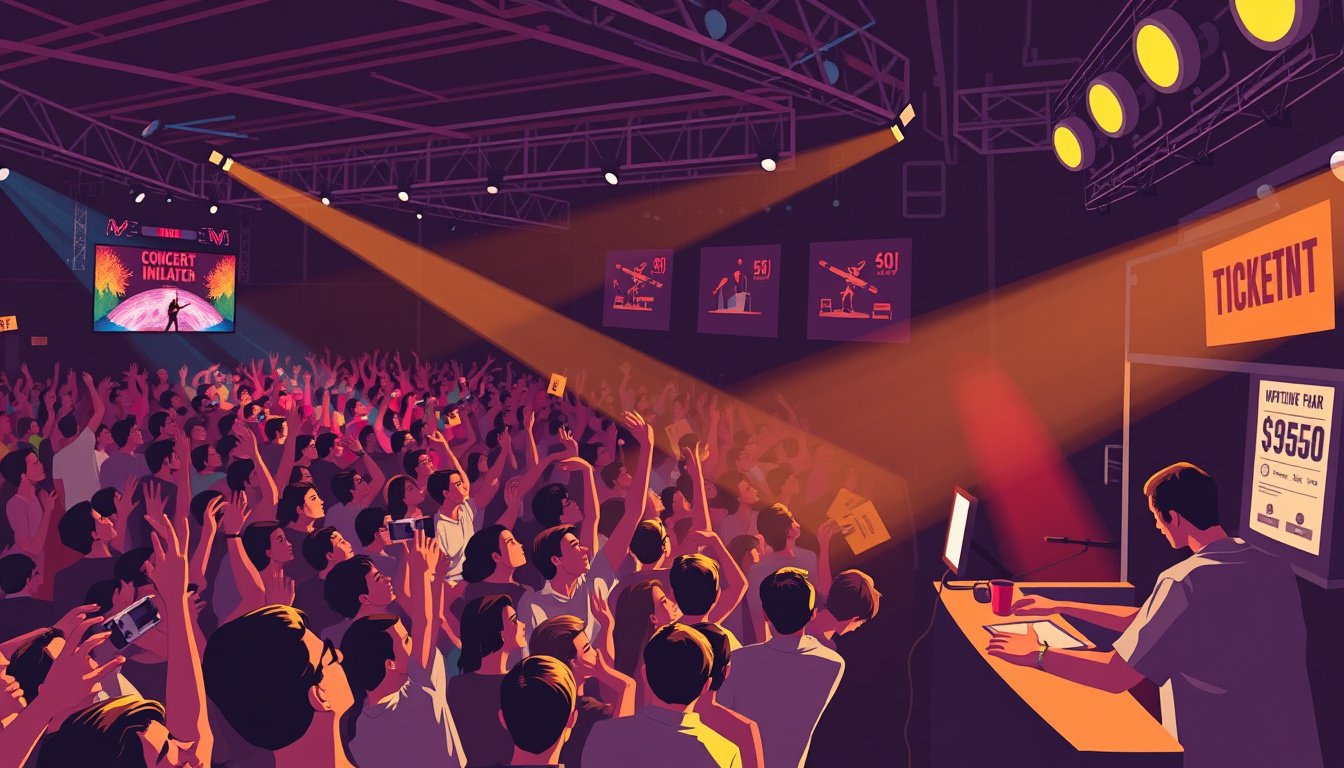In recent years, concertgoers have witnessed a dramatic shift in gig pricing, leaving many to reminisce about the days when they could catch a live performance for just £4.
With inflation affecting every corner of our economy, the music industry has not remained untouched.
This article explores the historical context of gig pricing, examining how the cost of attending live concerts has evolved and the subsequent impact on accessibility for fans across different demographics.
Understanding these trends is crucial not only for music enthusiasts but also for industry stakeholders seeking to balance profitability with cultural accessibility.

Key Takeaways
- Concert prices have significantly increased over the years, impacting accessibility for fans.
- The rise in ticket prices is contributing to a broader cultural crisis in live music.
- Understanding the historical context of gig pricing helps to highlight the stark contrast with today’s inflated costs.
The Historical Context of Gig Pricing
When it comes to live concerts, the pricing of tickets has become a topic of substantial debate, reflecting both the evolution of the music industry and the economic landscape in which it operates.
Historically, ticket prices for gigs were quite reasonable; the concept of a profitable concert was rooted in accessibility, with prices aimed to encourage attendance rather than exclude potential fans.
In the past, one could enjoy a night of live music for as little as £4, allowing fans from all walks of life to experience the thrill of live performances.
However, in recent years, escalating costs associated with staging events, artist fees, and venue rentals have seen ticket prices soar, leading to increased scrutiny and frustration among audiences.
This has given rise to a cultural concern regarding the affordability of live music and the potential alienation of fans who find themselves priced out of the experience altogether.
With rising costs sidelining the average concert-goer, some industry experts argue that this shift may erode the sense of community and connection that live music traditionally fostered.
For concert enthusiasts, the challenge lies in navigating these changes, seeking out value without compromising on the quality of their musical experiences.
Impact of Inflation on Concert Accessibility
As inflation continues to rise, its impact on the accessibility of live concerts has become a pressing concern for music lovers everywhere.
The soaring costs of attendance, from ticket prices to transportation and concessions, are forcing many fans to reconsider their ability to enjoy live performances.
According to multiple reports, including one from John Harris in The Guardian, the average concert ticket price has dramatically increased in recent years, making it difficult for casual attendees to join in the experience.
This economic strain not only limits access for fans but also affects the diversity of audiences at concerts, as higher prices often mean that only those with disposable income can afford to attend.
Moreover, the consequence of this inflationary trend may lead to a homogenization of concertgoers, stripping live music events of their vibrant culture and inclusivity.
While it’s essential for concert promoters and venues to find ways to mitigate these challenges, fans are also called to advocate for fair pricing and support local artists whose performances often come at lower costs.
Ultimately, the socio-economic implications of rising concert prices underscore the need for a more equitable approach to live music access, ensuring that everyone has the opportunity to experience the joy of live performances.

